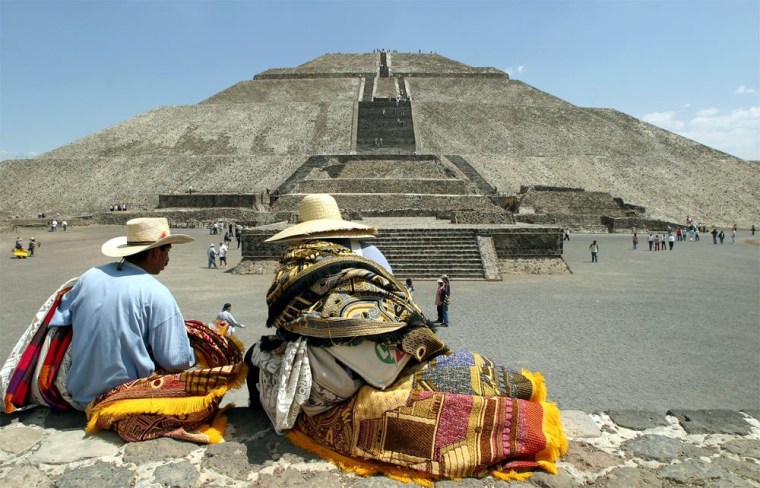Ancient Mexican pottery confirms that people made and drank a milky alcoholic concoction at Teotihuacan, one of the largest cities in prehistory, researchers say.
This liquor may have helped provide the city's residents with essential nutrients during shortfalls in staple foods, scientists added.
Teotihuacan, whose name means "the city of the gods" in the Nahuatl language of the Aztecs, was the largest city in the Americas before the arrival of Christopher Columbus. At its zenith, Teotihuacan encompassed about 8 square miles (20 square kilometers) and supported an estimated population of 100,000 people.
To shed light on the mysteries surrounding Teotihuacan, scientists investigated what the people there might have eaten and drank. [In Photos: Human Sacrifices Discovered in Ancient City of Teotihuacan]
Corn, also known as maize, was a key crop — but low rainfall and limited groundwater resources made growing maize there risky. In addition, while maize is high in calories, it contains only low concentrations of several vital nutrients, such as iron, calcium and B vitamins.
Murals in Teotihuacan depict agave plants, which are also known as maguey plants. A number of these paintings may also depict scenes of people drinking a milky alcoholic potion known as pulque, which is made from maguey sap.
Previous studies hinted that pulque might have helped keep people in Teotihuacan alive. Maguey withstands frost and drought better than maize, and pulque could have provided vital calories and most essential nutrients.
Scientists analyzed more than 300 fragments of pottery, dating back to between the year 200 and 550. The researchers cleaned and ground up the potsherds, and then scanned the resulting powder for any materials that the ceramic might have absorbed.
Fourteen fragments contained chemical evidence for the making of pulque. Researchers said fermented maguey sap may have been stored in vessels that were sealed with pine resin.
Marisol Correa-Ascencio, an archaeological chemist at the University of Bristol, said the findings were "a critical first step" toward determining the diet of Teotihuacan's inhabitants. She and her colleagues detailed their findings online Monday in the Proceedings of the National Academy of Sciences.
— Charles Q. Choi, LiveScience
This is a condensed version of a report from LiveScience. Read the full report. Follow LiveScience on Twitter, Facebook and Google+.
